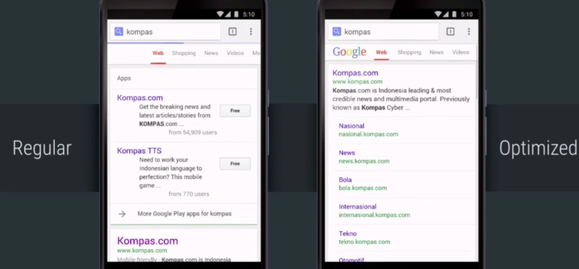Not everyone enjoys the constant connectivity that First rld users take for granted. So, for developing countries—, possibly, the U.S.?— said it will allow many of its apps to be accessible offline.
“Making the world’s information accessible to users everywhere has been at the heart of what does, right from the start,” said n Fitzpatrick, vice president of engineering, on stage at the I/O developer conference keynote on Thursday.
“More more people are getting a new smartphone, for many of these people, it will be their very first computer,” Fitzpatrick said. She added that just six countries, including China, Mexico, Brazil, will be responsible for 1.2 billion smartphone sales by 2016, but many of them lack pervasive Internet access. “These people will have a profound impact on mobile computing, both as users as creators,” Fitzpatrick continued. “So we’re thinking very carefully how we evolve our products, our platforms, to address their particular needs.”
First, Fitzpatrick said, the company plans to exp its Android One program. The low-cost phones based on ’s reference designs help the company drive a stard configuration that can run the latest apps. They’re available in India, Bangladesh, Sri nka, Turkey, Nepal, via partnerships with about ten hardware makers.
’s low-cost Chromebooks are also targeted at emerging markets, with “tens of millions” of the low-cost computing devices available worldwide, Fitzpatrick said.
But the overarching idea is to make ’s apps fast, useful, relevant, no matter where you are in the world—including developing regions, where “speed, size, connectivity are central concerns,” Fitzpatrick said.
Search Chrome: In Indonesia, found that loading a search results page took 8.5 seconds on a 2G connection— clicking on a result could take 25 seconds more use a megabyte of data. So launched a version of Search that’s ten times smaller 30 percent faster, starting in Indonesia. Search results launch four times faster use 80 percent fewer bytes.

’s optimized search results load fast when they need to.
In India, the company is deploying a network quality estimation service. If you’re surfing the b on a low-fidelity Internet connection, will show you a web page with reduced image quality, to save bwidth. Images will, in some cases, be replaced by placeholders.
And yes, there will be offline acceess. “This means that you’ll be able to save any page you’ll visit…for later,” Fitzpatrick said.
YouTube Offline: In India, Indonesia, the pines, Vietnam, has launched YouTube Offline, where users can cache a YouTube video for up to 48 hours on their phone without an active Internet connection.
Maps: though HERE other services have made offline maps increasingly popular, ’s been behind the curve. ’s Fitzpatrick said they’ve been adding more public transit options in areas of the world like Sao o, Brazil, the company is working to take those map options offline—even things like the opening hours of a museum, as well as turn-by-turn directions.
The real question is whether takes these low-bwidth options, brings them to the United States. Because while companies like Verizon are working to make cellular connectivity pervasive, it’s not totally everywhere.














